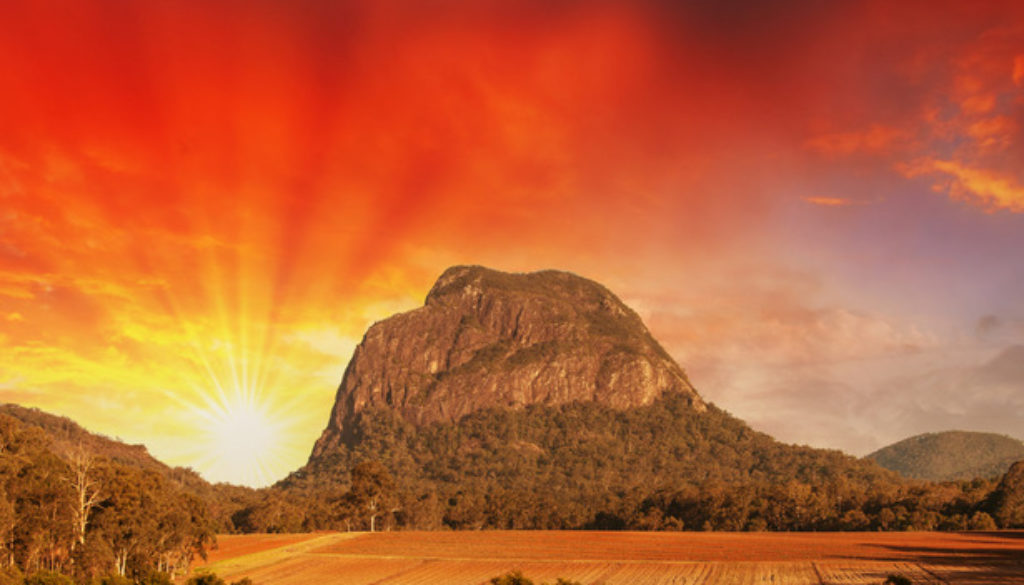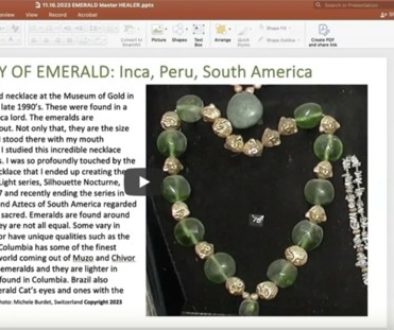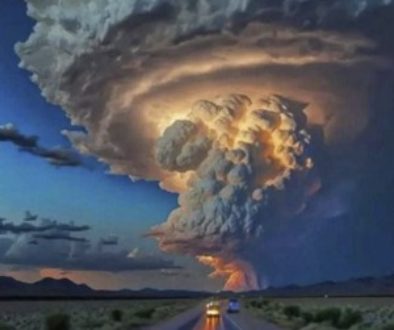Walking the Land – MOUNTAIN SHAPES
I always look at a mountain/apu (mountain spirit) outline, often seeing something familiar to me. We may figure it out and say that it looks like the profile of a human or animal or some type of recognizable shape. Pay attention to this because something is “there” that is responding to your intuition, your eyesight and instinct.
Here’s a good example: In Queensland, Australia, Glass House Mountain range, there is an Aboriginal mountain named Mount Beerwah. It comes from the Aboriginal Dungidau language: “birra” means sky, ”wandum” means climbing up. The Aboriginal people see HER (there are apus who are male, female and integrated) as the ‘beautiful pregnant mother.’ As I look at her silhouette in this photo, I see a woman’s breast and her nipple, and the ‘baby’ resting upon it. What do you see?
The outline of an apu is telling the observer something about it. Some people will see something; others will not. But if you do see some symbol or anatomical or animal carved into the mountain, here is what is happening: When your intuition, which is connected directly to your heart/feelings/emotions, becomes merged and you see ‘something’ that means a lot to you, there is an agreeable vibrational frequency between the apu and your heart. This is a good thing if you feel PULLED or YEARN to be with this mountain, to be closer to it, to know the spirit of it on a far more intimate basis.
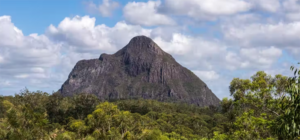
There is an invisible but living AGREEMENT between the two of you when this magic occurs. Give the apu a gift of cornmeal, introduce yourself by name, say what you are doing there, and ask permission to step upon the slope of the apu. If you are given permission, sit on the slope, ask for a message from the apu, meditate. Later, it may well send you a dream. Pay attention. Write in your WTL journal any synchronistic event(s) that happen while you are merging with the spirit of the apu.
At some point, talk to locals about the mountain if you have such a chance. Get any story or myth about it. Write it down in your journal. If there is a bookstore nearby, search for a book(s) written by a “local” about the mountain range. Chances are, it may double check to what you saw symbolically.
Since Mount Beerwah is on Aboriginal land, I would try to speak with one of the elders, who may tell you more about the apu. This mountain on Aboriginal land has Wollumbin’s traditional guardians, and is cared for by the Bundjalun. Mt Beerwah is called “mother” by this clan. One of the speakers for the Bundjalun said, “”[Mount Beerwah is] the mother mountain. It is a sacred site. It’s where the birthing places were, that’s the main thing…” For their people, their clan, and most likely, the women of the clan, “mother” may well mean a place for women to connect in sacred ceremonies with the female apu and they might ask her help with a pregnancy, or getting pregnant, or praying for a baby/child.
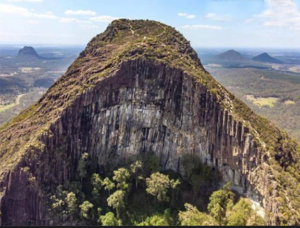
From a geology perspective, this apu is known as a volcanic “plug,” meaning red hot lava poured out of a crack in Mother Earth and created Mt. Beerwah. If you can find photos online, you will see that on one side, there’s a a huge concave area just below the summit. It has six-sided columnar basalt vertical “posts” as well as the area being oval and containing a rich assortment of trees, bushes and LIFE, in general.
If you are able to circumnavigate the apu, you can see why Mt. Beerwah is called “mother.” On one side, she is solid, but on the other side, there’s a hallowed-out area and if goes unnoticed, we miss a very important part of the ‘story’ about this sacred apu. She even has a “womb” on one slope. Just as a woman who becomes pregnant, she too becomes rich with life. This female apu mimics or REFLECTS a woman’s condition. On one side, if you observe it, there is a breast with a nipple and a baby laying upon it. On another side of the same apu, you have the womb where the conception occurred. One can see why the Aboriginal people call her “mother.”
Females of any kind, (a mountain, a bush, a human, a rock, a stream, lake or ocean, tree, etc.) are always symbolic of women. On the concave side of Beerwah, it contains flora and fauna within the “womb” or oval area created by the lava vent and reminds me that the rich greenery within it is a symbol of the mountain, who is carrying a baby within her ‘womb.’
The four elements give us more information: lava/basalt is created from the element FIRE. It comes from a volcano, or it could also be from lava that oozed up through a crack in Mother Earth, as it did in Beerwah’s case. Fire is symbolic of life, of being active and action oriented. When one becomes pregnant, the “fires of Life” are engaged, and the woman carries a second life within her womb.
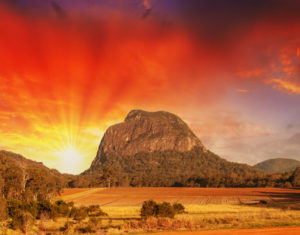
There is another mountain to the right of Mt. Beerwah. That is Mount Tibrogargan. In every range there is one mountain who is the ‘leader’ of the area. It can be female, male or integrated. In this case, the Bundjalun people call him, “father.” These two volcanically-created apus sit next to one another in the Glass Mountain Range. For the Aboriginal people, this holds great meaning, and they are considered very sacred to the clan. Family is important to them, and these two mountains, mother and father, are symbolic and mirror their own lives as mountain parents with their child.
